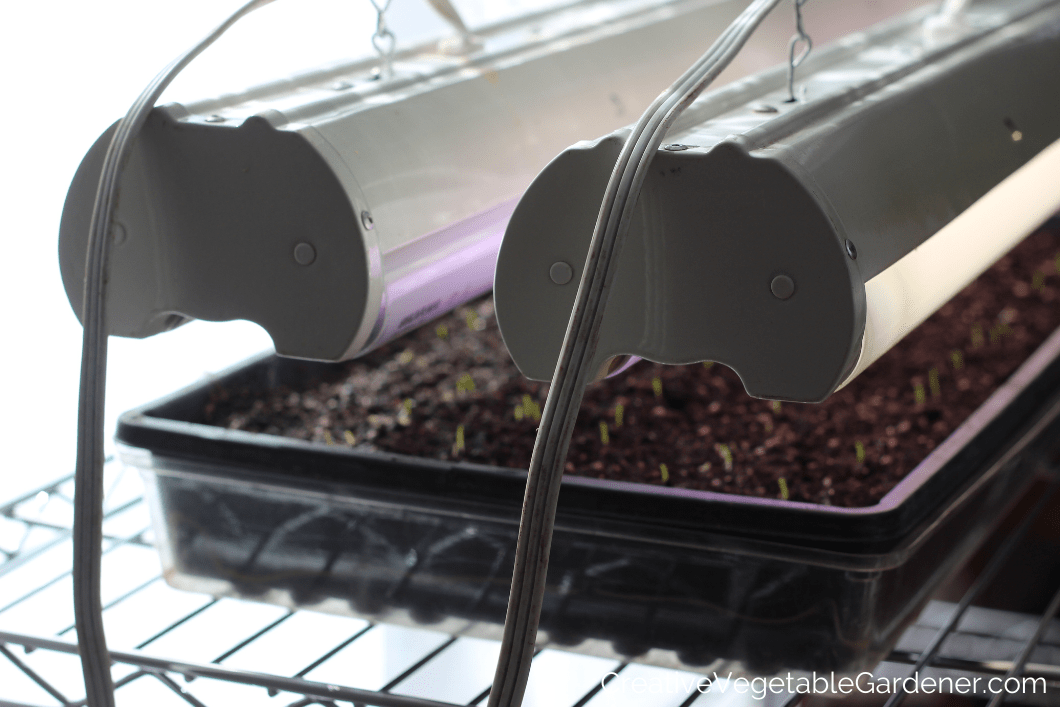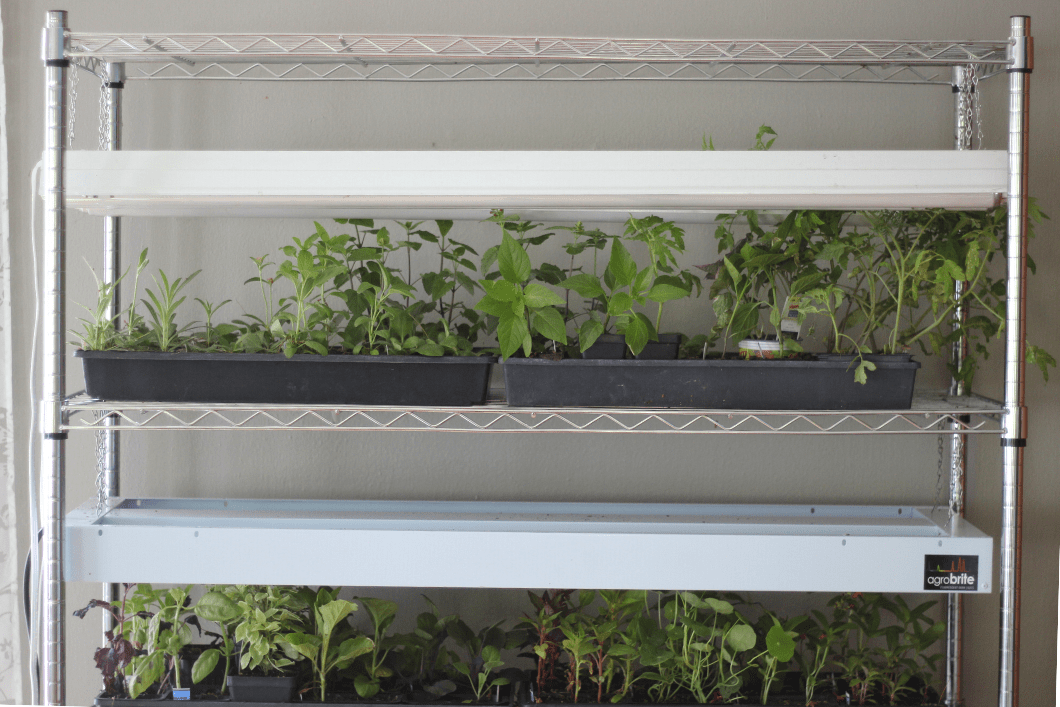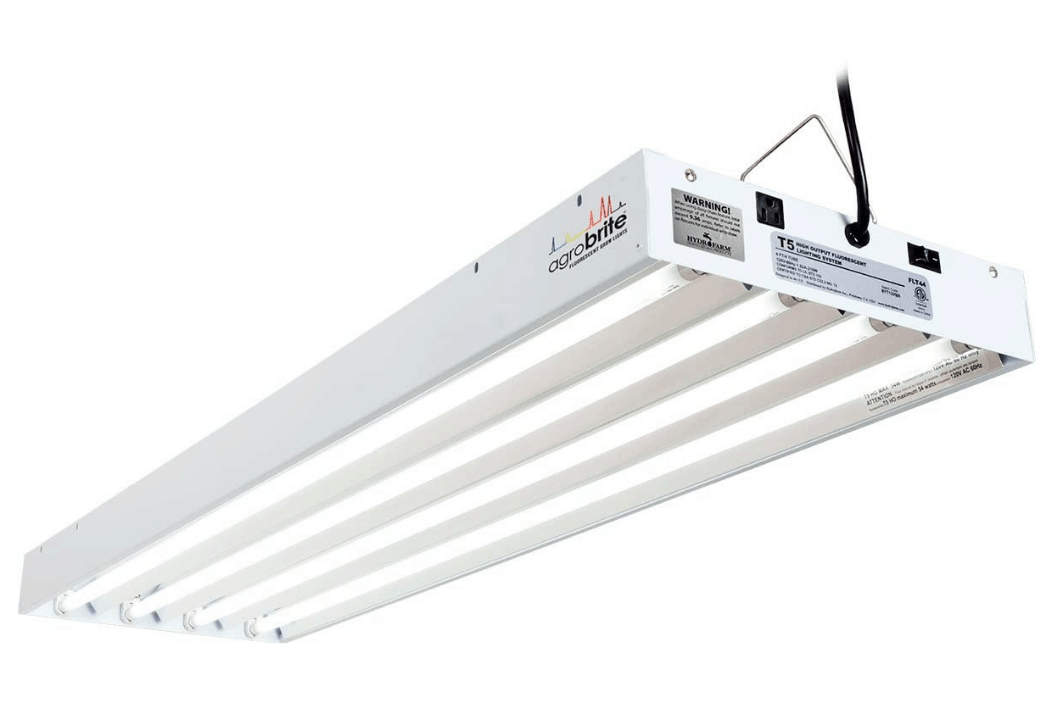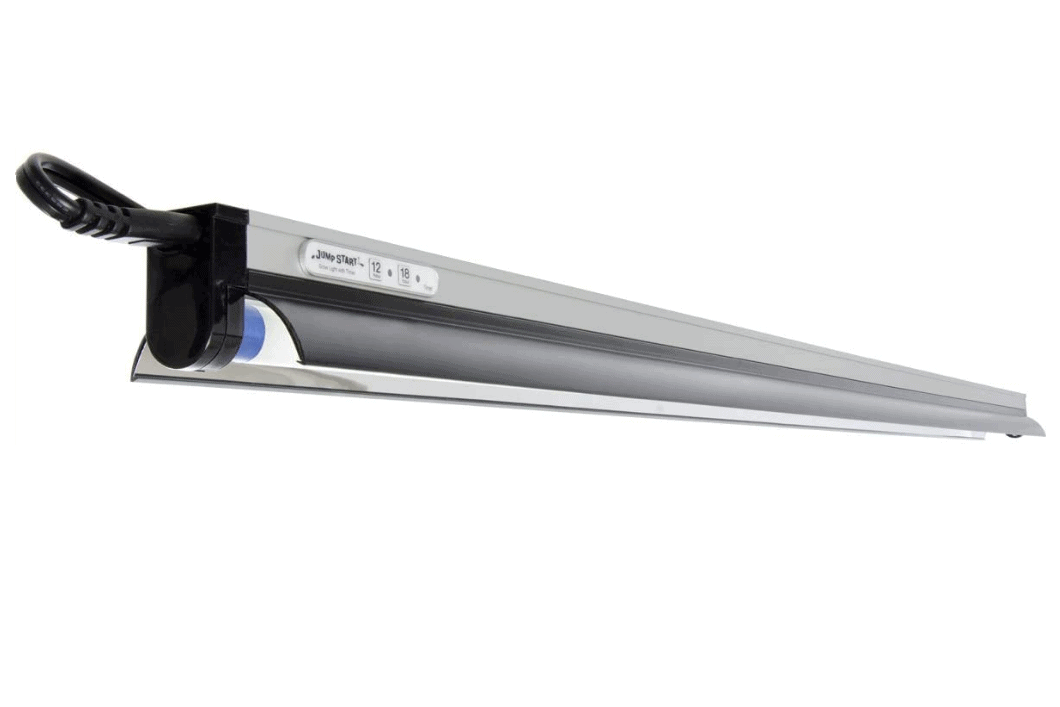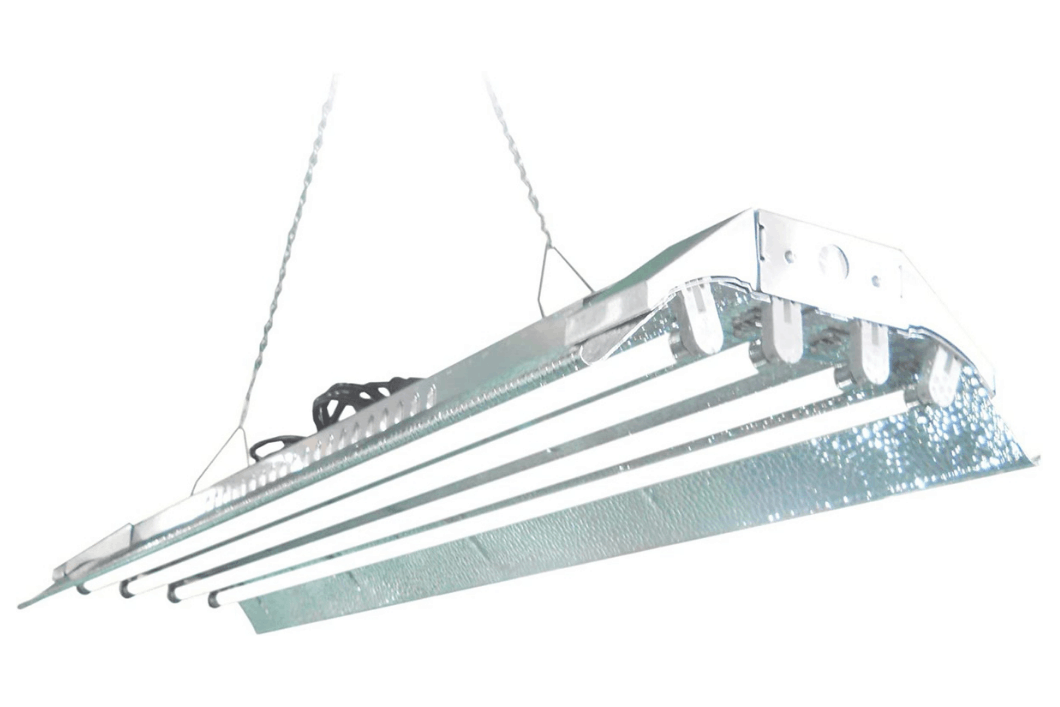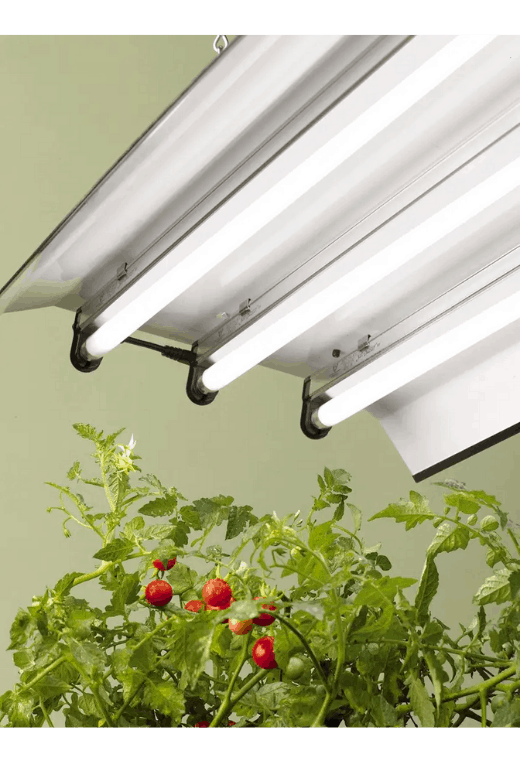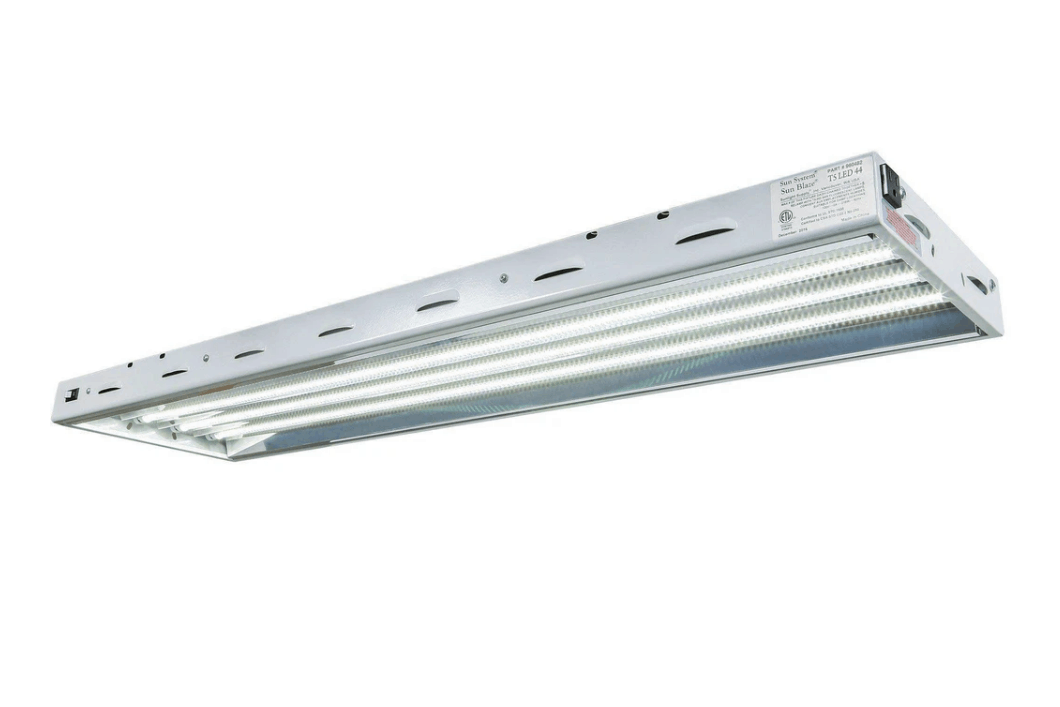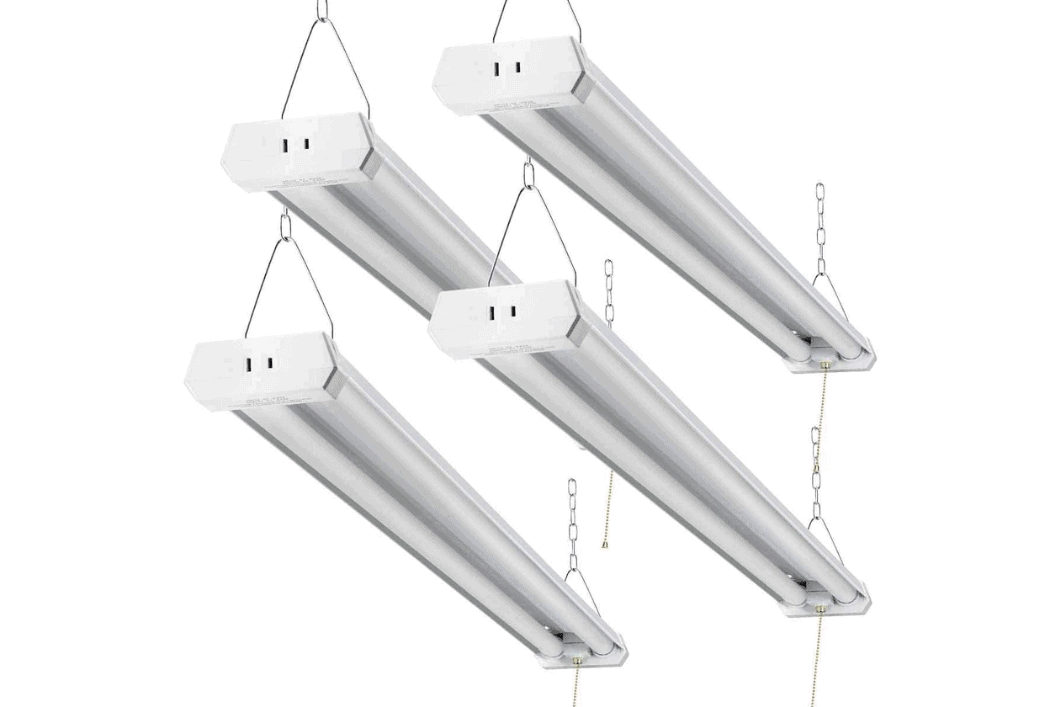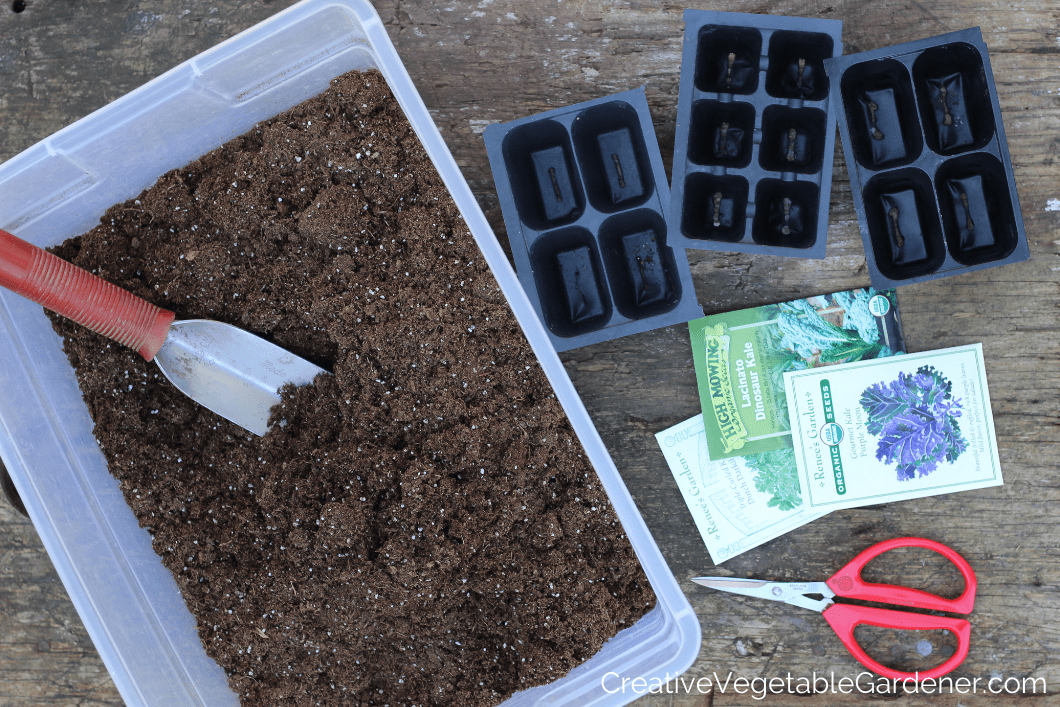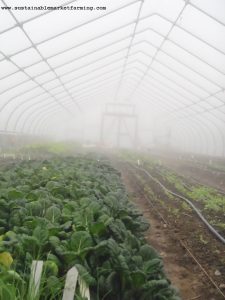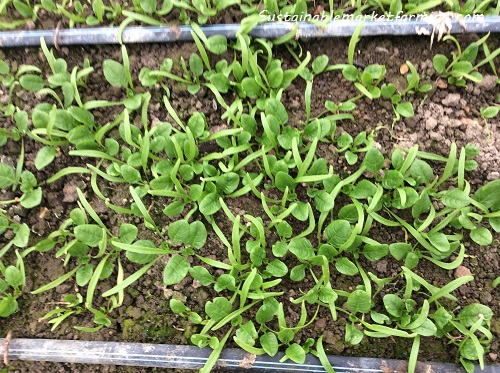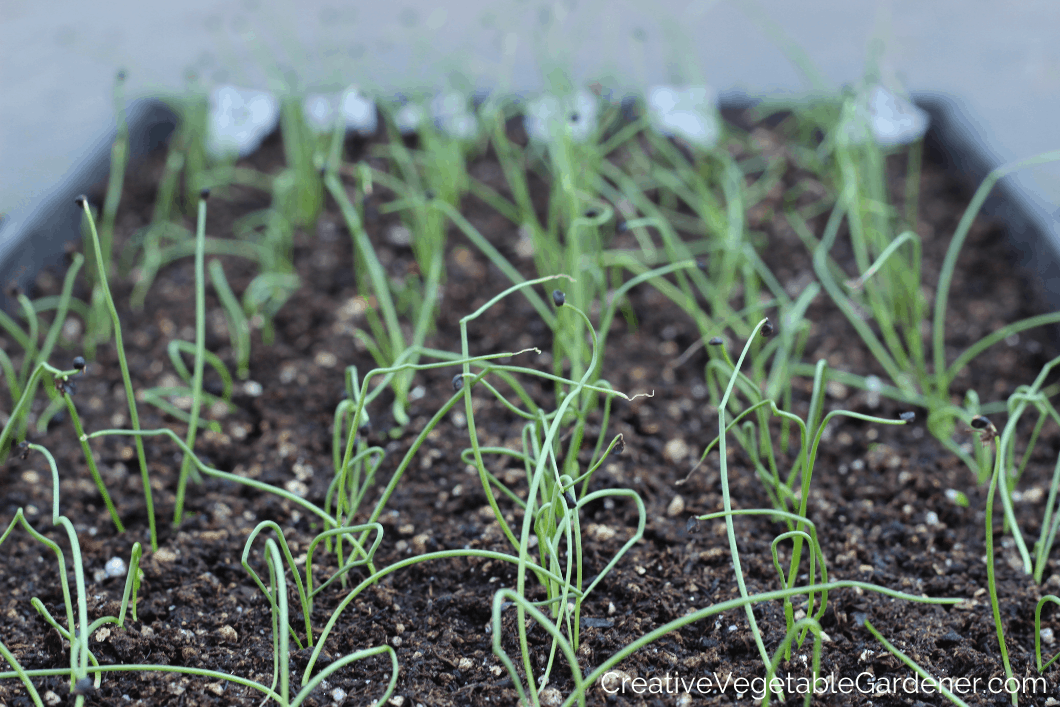
Confused and overwhelmed by all of the options for grow lights for seed starting? Yeah, me too! I’ve bee nursing along my old fluorescent light set up for the last few years and decided it was time to upgrade when one of my ballasts gave up the ghost.
The grow light landscape has changed dramatically over the last 15 years when I first set up my system. And many more options and companies means it’s become difficult to navigate the myriad of choices and decide which set up is right for you.
So, I dove in for you, spent time researching, wrote this article, and even purchased some of the grow lights I share in this below.
Let’s get started.
This post contains affiliate links.
Why You Need Grow Lights for Seed Starting
If you’re reading this post, I assume you’re already in agreement that you absolutely must have overhead lights to successfully grow healthy seedlings at home.
Vegetable, herb and flower seedlings require a lot of bright light and when they don’t get it they can get long and leggy. This is not good! You want short, sturdy and stout seedlings, not tall and stretched out plants.
Even if you put your plants in front of a sunny, south-facing window it won’t provide the hours (the sun sets earlier in late winter/early spring) or intensity (light in front of a window isn’t nearly as strong as the sunlight outside in the garden) of light they need. Plus, it’s the overhead light source that really makes a difference, instead of just light from the side.
Things to Think About As You Shop For Lights
Before you even embark on the process of purchasing grow lights for seed starting, you need to think about what your whole system is going to look like.
By “whole system” I mean the rack, lights, and supplies you’re going to use for starting seeds. They all need to work together.
Rack/Shelving Unit
I use a 5-shelf stainless steel wire rack for my seed starting operation. I have lights hanging from four of the five shelves (except for the bottom one which is close to the floor). The shelves are 4′ wide, and this is very important because lights come in different lengths. You have to make sure the length of the lights matches the width of the shelves.
For simplicity’s sake, I definitely recommend purchasing some kind of wire shelving system for your seed starting rack. They’re affordable, easy to assemble, and commonly stocked at big box and hardware stores. And, when you’re not using it for starting seeds you can move it into a basement, spare room, or garage and use it for storage.
My metal shelving unit is very similar to this one (with one less shelf) or this one. If you don’t start as many seeds as I do (re: thousands!), then you can choose a shorter rack with less shelves.
Whichever model you buy, the most important measurements are the width of the shelves (should be about 48″ to fit standard sized lights) and the depth of the shelves (around 18″ will give you plenty of room for seedling trays). The height and how many shelves it features is more dependent on how many plants you’ll grow.
In this article I walk you step by step through my whole seed starting rack set up and DIY grow lights. In this article I’m focusing mainly on the lights.
Later, I’ll share some option for complete seed starting set-ups you can buy that already have a rack and lights that go together.
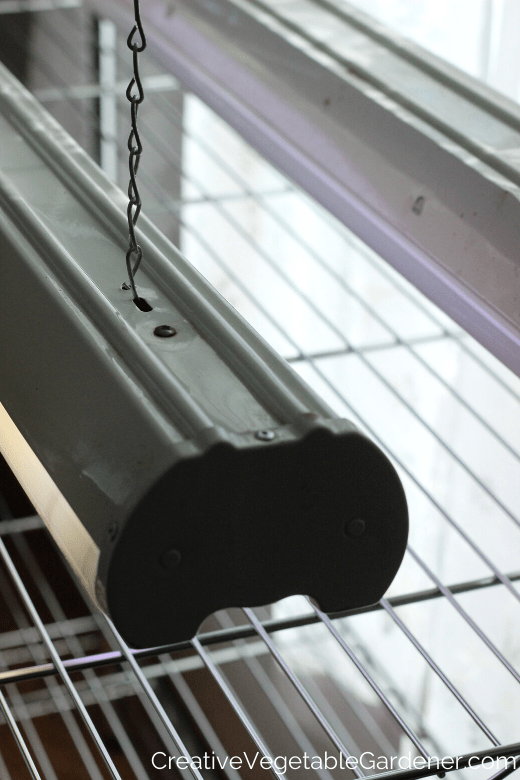
How Will You Hang the Lights?
The grow lights need to be suspended from above so they shine down on the plants. So, you’ll either need to mount them or hang them. This is why I love using a wire rack. With a simple s-hook and metal chain I can hang my lights from the shelf above and move them up and down as the plants grow.
Lights that are mounted in a fixed position, say on the bottom of a wooden shelf, don’t give you the ability to raised and lower them. This is why I shy away from that kind of system. I like flexibility!
This is important because you want to make sure you purchase lights that fit with your system – either hanging or mounted.
Where Will You Put Your Seed Starting Rack?
My rack lives next to my desk in my office which is an extremely bright, south-facing room. There’s a lot of ambient light throughout the day. In contrast, if I was starting seeds in the basement, they would not receive nearly the amount of extra light they do in my office.
This matters because you might be able to get away with lights that put out less overall light if your plants have another source where they live. If you’re growing in a darker environment you might want to shop for stronger lights with a higher output.
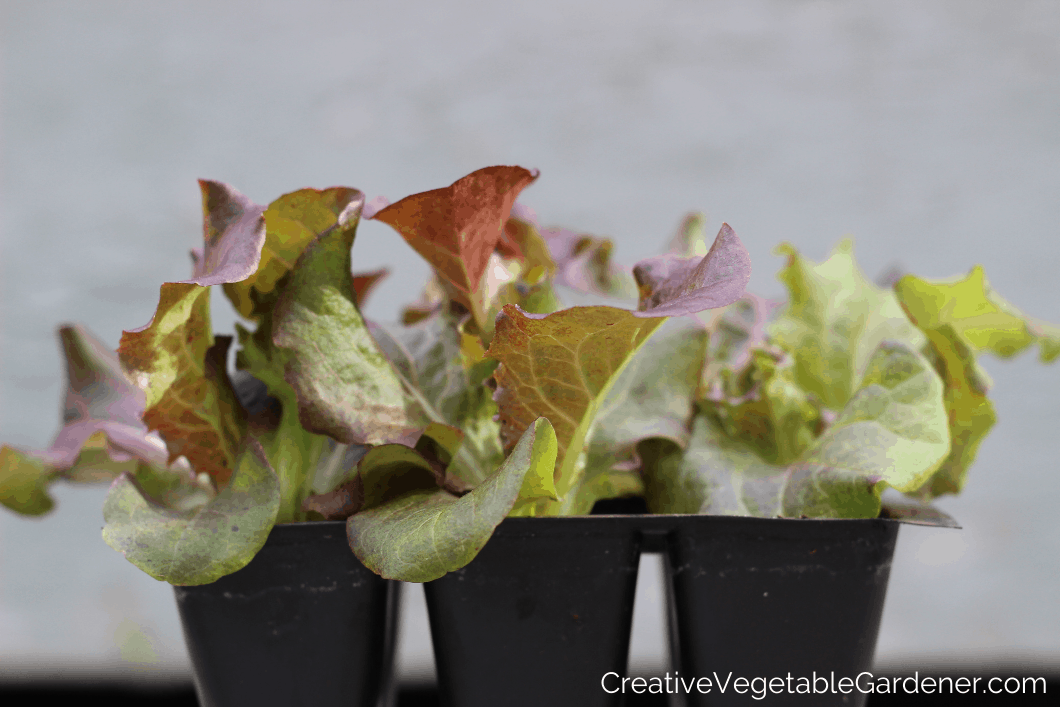
The Differences Between LED and Fluorescent Lights
Once you start shopping for grow lights for seed starting, you’ll notice that you basically have two choices – LED or fluorescent. I’ll break down these two options and share the pros and cons of each.
Florescent Lights
The most common sizes of florescent lights are T5, T8 and T12. The T stands for tube and the number is the diameter of the light. The bigger the number, or diameter, the less efficient the light.
Pros:
- Less costly than LEDs
- Widely available
Cons:
- Less energy efficient than LEDs – although for a short seed starting season of several months you likely won’t see much of a savings difference
- Shorter lifespan than LEDs – but, still up to 10,000 hours, which means many years of seed starting life
- Quality degrades over time – it’s recommended that you replace your lights every few years (although I don’t buy new bulbs or ballasts until they’re no longer working)
- Release more heat – I have a light that produces a lot of heat that dries out my plants, not my favorite feature
- Contain mercury so need to be disposed of carefully
Types of Florescent Lights
Florescent lights come in three sizes: T5, T8 and T12. T12’s are the oldest and least efficient of the sizes. T5’s and T8’s use a more recent technology, so they’re more efficient than T12’s. And in fact, the T5’s, which are almost half the size of T8’s, put out just as much light even though they’re a smaller size.
There’s also a High Output (HO) T5 that emits more light than a regular T5. These are what many people are using for seed starting if they opt for florescent lights.
LED Lights
There have been a lot of developments in the world of LEDs since I built my seed starting rack. Although the prices have been coming down over time, they are still a more expensive option. But, one you might decide is worth it!
Pros:
- Give off more light – in general LEDs have a higher output of light than fluorescents depending on the model
- More energy efficient than florescent lights – although for a short seed starting season of several months you likely won’t notice much of a savings difference
- Longer lifespan – could last 2-5x longer than fluorescents
- Release less heat – I like this because it means my seedlings won’t dry out as fast
- Free of mercury
Cons:
- Costly – LED lights for seed starting are not inexpensive!
Types of LED Lighting
When you start shopping for LED grow lights for seed starting, you may start to notice that there are lots of crazy colors like red, blue and purple. Red (warm) and blue (cool) light drive photosynthesis, so many commercial growers will choose a combination of these two colors.
The disadvantage is that the light they emit is also that color, so it might look strange having a light like this at home in the room where you start your seeds.
As a home gardener, you don’t need to get to wrapped up in buying a perfectly colored LED light. Instead, opt for a full spectrum light, which means there’s some amount of every color so it looks white (and more natural) to the eye.
LED lights for seed starting usually lean towards cool (blue) spectrum, somewhere between 5000K (Kelvin) – 6400 K.
Options for Purchasing Florescent Lights
If you decided to move forward with florescent lights you have several options.
Build Your Own
If you wanted to DIY your own set up, you could purchase 48″ long shop lights that hold two bulbs either online or at your local big box home improvement or hardware store. Florescent lights are being phased out in favor of LED shop lights, so you’ll likely want to purchase LED shop lights instead.
I also talk about more LED shop lights in the LED section further along in this article.
If you want a tour of my seed starting rack, including the old school florescent lights I use (which I’m slowly replacing), check out this post about the Ultimate DIY Grow Lights.
In general, I’d recommend trying to buy High Output T5’s and a fixture that has some kind of reflective hood on it. That being said, I’ve also gotten by with pretty low end fixtures without hoods and inefficient T12’s for the last 15 years! As mine break I’m upgrading to LED lights.
If you’re using a wire rack or other set-up that requires you to hang the lights, make sure they’re not ceiling mounted models, which will make them difficult to hang.
Pre-Made Systems
If you want to make it easier on yourself, (and I like to do that more and more!) I would recommend simply purchasing an all-in-one light system instead of assembling your own.
I find that they’re easier to store, the lights aren’t in danger of coming loose and smashing into bits on the ground, and many of them are made from much higher quality metal than cheap shop lights.
Hydrofarm FLT44 System 4′ Fluorescent Grow Light
I’ve had this Hydrofarm light for over five years and have been very happy with it. Using an all-in-one light system like this means there are fewer parts I need to keep track of. Instead of two shop lights and four bulbs, there’s just one housing with four bulbs inside that don’t easily come out.
The light is much brighter than four regular florescent bulbs. The only thing I don’t like about it is that it does emit a lot of heat, so I find that my seedlings underneath this light tend to dry out quickly if I don’t monitor them daily.
Approximate Price: $150-200.
Hydrofarm Jump Start Modular T5 Light Strip & Snap-On Reflector
Since I find that the four T5’s in the above light fixture are a bit too much, I would probably start out with buying two of these and seeing if I can get away with less.
What I like:
- It has a reflective hood
- It’s hangable
Not sure about:
- It has a built in timer, which seems unnecessary unless you’re only using one light. I plug all of my lights into the same timer
- The timer could be a feature that breaks after some use
Approximate Price: $65 x 2 per shelf = $130
Durolux T5 HO Grow Light – 4 Foot
What I like:
- Lots of good reviews
- Has a large reflective hood to maximize light output.
- One per 4′ shelf should work well.
Not sure about:
- I’m always skeptical of things that seem too inexpensive. Will it last?
Approximate Price: $110
Gardeners Supply High Intensity Light Fixture
What I like:
- Should be able to use one fixture per shelf
- Only has three bulbs instead of four, which might not output as much heat and dry out my seedlings
- Has a reflective hood
- Hangable
- Gardeners Supply is a family-owned company with a good reputation
Approximate Cost: $200
Purchase on Gardeners Supply here.
If you’re not interested in going the DIY route and want to save time, consider purchasing a complete system with the rack and lights.
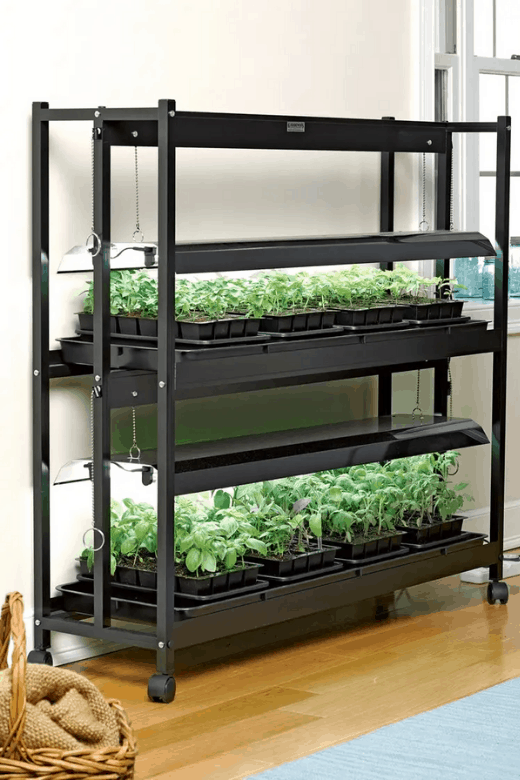
2 Tier Sunlite Garden by Gardeners Supply
You’re going to save a lot of money by purchasing a wire rack and assembling your own set up, but if you’re short on time a pre-made system would be the way to go. Gardeners Supply is a reputable company, so you would be safe ordering through them.
Make sure that whatever model you order features either adjustable lights or shelves. You’ll want to be able to move them up and down as plants grow.
Approximate Cost: $650 – 840
Options for Purchasing LED Grow Lights
I heard about a company in Wisconsin where I live called The Garden Supply Guys that is purported to have excellent customer service. That’s rarity these days, so I decided to give them a call to explain my current set-up and ask for recommendations for switching to LEDs. Here are two options they gave me.
Sun Blaze® T5 LED 44
Things I like:
- It’s 4′ long so it should fit most racks
- You can use one per shelf
- Each one has an on/off switch
- You can connect multiple units together through their embedded outlets
- Sold by a local Wisconsin company that actually has a customer service department that will answer the phone and help you out!
Approximate Cost: $250
LED Replacement Bulbs for Current Shop Lights
I had heard that you can purchase LED lights that will fit in an old florescent fixture. I asked the agent about this and she said yes, you can, but offered a warning that the old ballasts aren’t always compatible with new LEDs since the wattage differs, so you could fry the system. She suggested only using one LED per 2-bulb fixture and leaving the other one empty or just keep a florescent in it.
Approximate Cost: $30 – 40 per bulb, probably want two per shelf
If you were interested in trying this option she recommended the Vegetative + UV bulb or the Vegetative bulb.
I noticed these LED strip lights listed in several reputable places. You’d likely need two per shelf on your rack, so the cost could add up.
What I like:
- They’re basically an LED version of the shop lights I’m already using.
- Instead of four florescent bulbs I could likely just use two lights with one strip each since they output more light.
- It comes with a hanging system included.
Approximate Cost: $140 each, you likely need two per shelf
Purchase them at Johnny’s Selected Seeds here.
LED Utility Shop Lights
While I was researching grow lights for seed starting, I didn’t come across much that talked about using regular LED shop lights for this purpose. But, I figure it surely is possible to use them, right?
I did a little digging around to find lights that are hangable and bright.
What I like:
- You can get four lights for less than the price of one HO florescent or the LED grow lights above
- They’re rated at 6000K, which is higher than most LED shop lights I found
- They’re linkable (you can plug them together)
- Come with hanging chains
- Good reviews
Bringing It All Together
Yikes, all of that research and writing this article gave me a headache! There is a lot of information and options to wade through when deciding to shop for new grow lights for seed starting.
I’m in the market for at least one new set, so what did I decide to do?
For me, it’s difficult to justify the steep cost of LEDs since I only use the lights for 2-3 months of the year. If I had a year round growing operation it would seem much more worth it. If I was going to go the LED route, I think I’d purchase the SunBlaze fixture instead of the strip lights.
It’s less expensive and I really like that the Hydrofarm florescent fixture I have already is just one piece. It’s much easier to store and move around.
If I was going to purchase a High Output Florescent light, I’d likely get another of the Hydrofarm, even though I don’t like the heat it emits.
But, I’m super intrigued by using LED shop lights! I want to test out LED lights, but I don’t really want to invest $250 at this point. So, as of this writing I’m going to order a set of LED shop lights and test them against the regular florescent shop lights and the Hydrofarm High Output light. That means I’ve have three different types of grow lights on one rack.
That’s why I jokingly call it my seed starting laboratory!
Update: I’ve been very happy with the LED shop lights. I haven’t noticed any negative difference in how my seedlings grow under these lights.
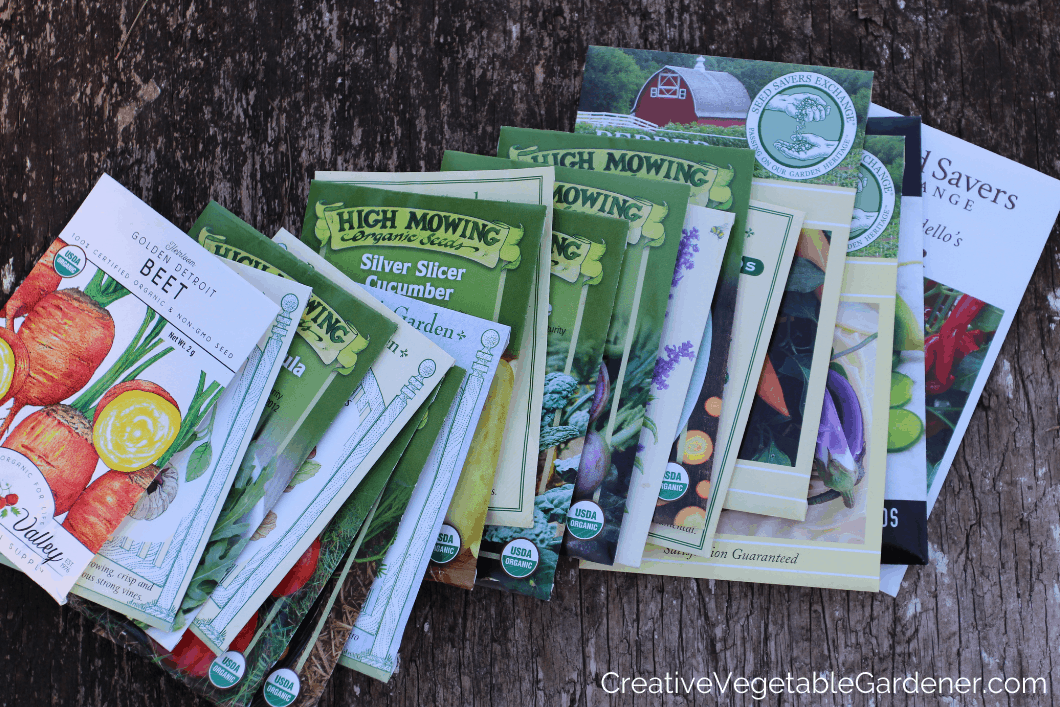
I hope this article helped you become more clear on your options for grow lights for seed starting. Starting seeds is a special part of the gardening experience. There’s nothing that quite compares to watching a tiny seed planted with your own hands grow into a healthy seedling ready to be planted outside in your garden in spring.
It allows you to be a part of the whole amazing journey of gardening – from seed to sprout to mature plant to the colorful harvest. What a gift!
Additional Resources for Starting Seeds at Home
Want help successfully growing your own plants this year? My how-to video series, Super Easy Seed Starting, can be watched at your own pace and includes printable handouts, templates, and checklists.
The videos are all filmed in my own seed starting laboratory (a.k.a. my house) and walk you step by step through the process of starting and caring for your own seeds at home. Read more about it here.
First, figure out exactly when to start seeds indoors in zone 5 or beyond. Second, find out how to choose the best seed starting mix and then read about tips for how to germinate seeds successfully.
You can find all of my favorite seed starting supplies, and much more, in my Amazon storefront.
The New Seed Starters Handbook is the classic seed starting bible! I’ve had it on my gardening bookshelf for many years. Grab a copy here.
SHARE IT ON PINTEREST
